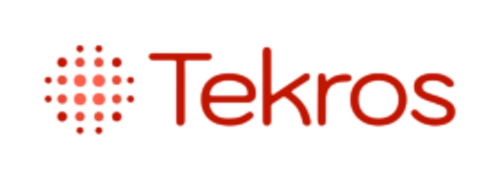Your trusted partner in delivering innovative IT solutions and exceptional service.
Web App Development
- Home |
- Web App Development

Web application development at our IT company focuses on building secure, scalable, and high-performance web solutions tailored to meet your unique business needs. From intuitive front-end design to robust back-end architecture, we create custom web applications that enhance user experience and streamline business processes. Our expert team leverages the latest technologies to ensure seamless integration, optimized performance, and future-ready applications that drive growth and efficiency for your business. Whether you need e-commerce platforms, enterprise systems, or specialized web apps, we deliver innovative solutions that elevate your digital presence.
Web Application Development Process at Tekros
1. Requirement Gathering & Analysis
- Business Needs Identification: Understand the goals, audience, and core functionalities required for the web application.
- Technical Requirements: Define the functional (features) and non-functional (performance, security, scalability) requirements.
- Feasibility Study: Analyze technical and financial feasibility to ensure the project can be successfully executed.
2. Planning & Strategy
- Project Roadmap: Develop a timeline with key milestones, deliverables, and deadlines.
- Technology Stack Selection: Choose the right technologies, frameworks, and tools (e.g., front-end, back-end, database, hosting) based on project needs.
- Architecture Design: Define the overall system architecture, including front-end, back-end, APIs, and database structure.
- Wireframing & Prototyping: Create wireframes or prototypes to visualize the application’s design, user flow, and functionality.
3. UI/UX Design
- User Interface (UI) Design: Design visually appealing and responsive interfaces that align with your branding.
- User Experience (UX) Design: Ensure smooth navigation and a seamless user experience, focusing on usability and accessibility.
- Responsive Design: Optimize the design for different devices, screen sizes, and platforms.
4. Development
- Front-End Development: Build the client-side interface using HTML, CSS, JavaScript, and frameworks like React, Angular, or Vue.js to create an interactive user experience.
- Back-End Development: Develop the server-side logic, database management, and APIs using technologies like Node.js, Python, Ruby on Rails, or PHP to handle the business logic and data flow.
- Database Design: Set up the database (e.g., MySQL, PostgreSQL, MongoDB) to store and manage data efficiently.
- API Integration: Connect the application with third-party services or other systems to extend functionality.
- Version Control: Use tools like Git to manage code versions and collaborate effectively.
5. Testing & Quality Assurance
- Functional Testing: Verify that each feature works as intended.
- Usability Testing: Ensure the application is user-friendly and provides a positive experience.
- Performance Testing: Assess the application’s speed, responsiveness, and scalability under different loads.
- Security Testing: Test for vulnerabilities like SQL injection, cross-site scripting (XSS), and ensure data protection.
- Cross-Browser Testing: Check compatibility across different browsers (e.g., Chrome, Firefox, Safari) and devices.
- Bug Fixing: Identify and resolve any bugs or issues before launch.
6. Deployment
- Staging Environment: Deploy the application in a staging environment for final testing before going live.
- Production Deployment: Move the application to the live environment, making it accessible to users.
- Hosting Setup: Configure the hosting environment (cloud or on-premise) and ensure proper domain, server, and database configurations.
- Monitoring: Set up tools to monitor performance, error logs, and user behavior post-deployment.
7. Maintenance & Support
- Ongoing Support: Provide continuous support to address any issues or bugs after launch.
- Performance Optimization: Regularly optimize the application’s performance for speed and reliability.
- Security Updates: Apply updates and patches to ensure the application remains secure.
- Feature Enhancements: Implement new features or improvements based on user feedback or changing business needs.
- Scaling: Adjust resources and infrastructure to accommodate growth and ensure scalability.
